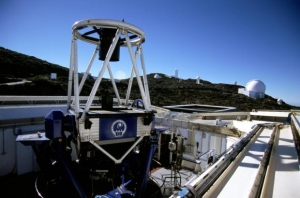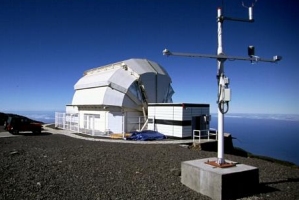Liverpool Telescope

Credit: LT
Astronomers use the Liverpool Telescope (also called the LT) to study the Universe. Young people all over the world also use it through The Schools' Observatory.
Schools are able to use the LT because it is fully robotic and does not need to be staffed. After sunset, the LT's computer systems check the weather conditions. If the weather is good, the roof opens up like a clamshell. The telescope then works its way through the list of observations sent to it via the internet during the daytime. Once the data has been collected, the LT sends it back to whoever asked for it.
Liverpool John Moores University owns and looks after the telescope. Scientists and engineers in and around Liverpool, UK designed and built it. But despite its name, the Liverpool Telescope is not in Liverpool. It is on the Spanish island of La Palma, off the coast of north-west Africa. This is because the weather and conditions on La Palma are much better for astronomy than in Liverpool!
The whole telescope is 8.5 metres tall, 6.5 metres wide and weighs around 24 metric tonnes. Despite its huge size, the LT can move to look at different parts of the sky. Engineers designed the telescope to respond to new events far away in space. It can receive a request and start observing a different part of the sky within minutes.

Credit: LJMU/ARI
The telescope has a huge mirror, 2 metres in diameter. The large size of the mirror lets the LT collect lots of light from objects far away in space. The mirror also directs the light towards a set of scientific instruments. As well as collecting visible light that our eyes can see, the LT can see in infrared light. It also has spectrometers that let astronomers study the chemistry of stars in space.
A special enclosure protects the mirror and instruments from rain or any other bad weather. The shape of the enclosure keeps air flowing over the telescope. This prevents turbulence in the air close to the telescope. Any turbulence would make the images look blurry.

